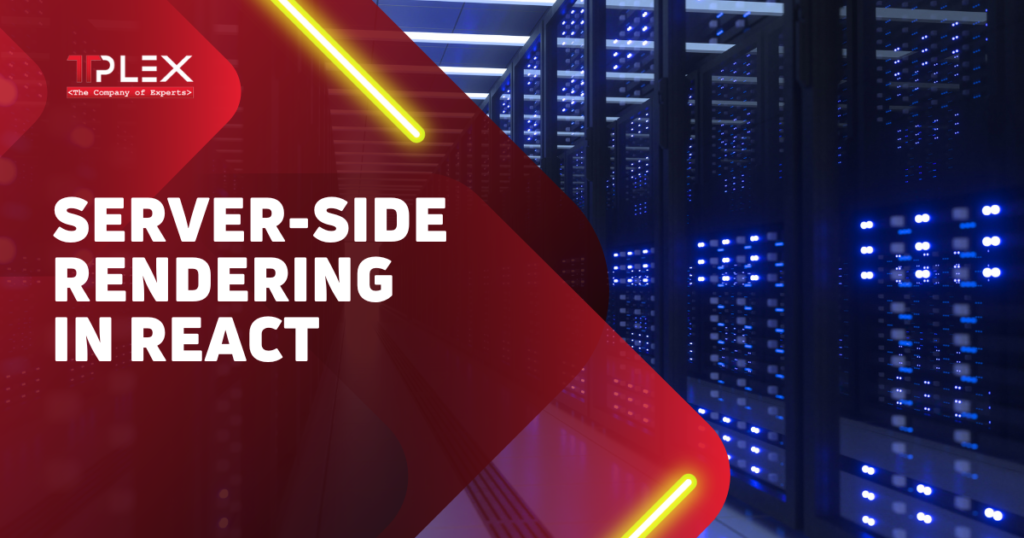Given the ever-growing competition in web design, the importance of providing the client with a comfortable experience when navigating websites cannot be overstated. Server side rendering is one of the most effective approaches that developers now employ.
To give the reader an all-encompassing understanding of server side rendering, what it can offer, and what problems it may cause, as well as how to use it in react-based apps, this article will also delve into the details of how it works and the problems that can arise in the process.
What is Server Side Rendering?
It is a process in which, instead of rendering the web page in the browser, the rendering is done at the server end. With client-side rendering from the traditional perspective, the browser is provided with a simple HTML skeleton and then uses applications on JavaScript to supply the data. In this model, the server transmits fully created HTML, making it easier for the client to perceive content as soon as a page is opened.
React SSR has become a preferred method of delivering variable content quickly and efficiently. This approach means that the first HTML content is rendered on the server, not the client, although this approach is not as popular as the previous one.

Advantages of Server Side Rendering
It has several important advantages that are necessary for the further development of your web application. Now, let’s examine several benefits of server side rendering, such as better search ranking, shorter first loading time, smoother operation on, in particular, older or slow devices, and a higher user interface quality.
⦁ Improved SEO
In light of SEO prospects, one of the key advantages of server side rendering is the adjustment of SEO positions. Some of the most popular requests are made through Search Engine Interfaces such as Google, which, in turn, indexes the web pages using the HTML code offered by the server. In situations such as client-side rendering, the first HTML that loads in the browser usually has little structure and can be considerably empty. Still, when the application loads, it has to use JavaScript to put something on the page. This may be a problem for search engines, especially when setting out to index the page. Also, Server-side React enhances web performance by pre-rendering pages on the server, improving SEO and user experience.
SSR solves this problem by rendering the output entirely in HTML returned from the server. This ensures that the uploaded content is made available as soon as possible for cataloging by the search engines, thus being ranked higher for easier and better retrieval. These enhancements can help businesses and websites that depend on traffic from organic search results focus on becoming more prominent, attracting more potential consumers or achieving better conversion rates.
⦁ Faster Initial Load Time
Another major benefit associated with server side rendering is that rushing time of an initial loads is also minimized. The traditional client-side rendering model requires the browser to retrieve the JavaScript bundle, run it, and then paint the content. This approach can be computationally and time intensive particularly for its users who might be operating in slow connections or using mobile devices such as Blackberries.
To overcome this, server side rendering sends a complete HTML document to the client, avoiding the FID problem. That is why users can see the page much quicker: The source in the form of HTML code is immediately visible to the browser, while scripts in JavaScript are not easily accessible to the browser. This initial extra loading time generally gives the application a better and more responsive feel.
⦁ Improved Action on Lower-end Machinery
SSR extends the burden of sending and displaying from the client to the server aspect. It is especially advantageous for clients to be open to more ambient-use book scenarios as the latter tend to be low on processing power, often older smartphones or tablets. SSR ensures that these devices do not need to render anything other than the HTML sent to them from the backend, as rendering tasks are handled on the server.
⦁ Enhanced User Experience
By making sites rank higher, loading faster and efficiently, and optimizing for low-end devices, the utilization of server side rendering leads to a better-enriched user experience. When users can reach the site and interact with it, they can spend more time on the site reading the content and making the next visit to the website. A user needs to have a positive experience in engaging with the website to encourage re-visits and even the potential for purchasing products provided within the site. In addition, the implementation of the SSR can also avoid speaking decoding time. By noticing that the content loads quickly, users tend to consider the application faster and more reactive despite some parts of the page still loading even in the background. From this perception, there is a very bright chance for the usability of the application and/or the satisfaction of the user by the application or the service being provided.
Also Read: Backend Developer: A Detailed Guide
Challenges of Server-Side Rendering
While SSR offers numerous benefits, it also comes with its own set of challenges:
⦁ Increased Server Load
Drawing pages at the server level strains your server-based infrastructure more than necessary. When a request is made, the server has to generate the HTML code and send it to the client, which can consume a lot of resources, particularly for complex applications.
⦁ Complexity in State Management
This happened during this conclusion as it suggested that managing the state in an SSR application could be more complicated than managing the state in a client-side rendered application because first requires more time as well and second has more dependence on the number of components present in a particular application. To maintain the synchronization of the server and the client space or the client view, you have to add extra logic and orchestration, which further complicates your application.
⦁ Development Environment Setup
Server side rendering setup can be even more involved in basic client-side rendering than in previous sections. It demands more work on the server side and in the make file-like scripts to integrate the real server code and the generated client code.
⦁ Limited Third-Party Library Support
Third-party libraries do not necessarily work with SSR, as some have dependency issues. To support client-side rendering some libraries can work only client-side and will not render correct if goes through the server which can limit your choices of tools and frameworks.
Summing Up
Server-side rendering has advantages because it allows users to have faster initial loading of components and better navigation through a web application both on powerful and low-powered devices. However, it brings features like adding more server load and difficulties in state management. Through that, programmers can estimate whether it is possible to apply SSR in the project and whether it will bring an overall upgrade to the loads and usability of the web application. SSR can still be considered an effective strategy in the web developer’s toolkit, especially if the web application needs to be highly performant and SEO-friendly. By leveraging SSR, you can deliver your users a high-quality, responsive, and search engine-friendly web experience.
Why TPlex?
Ready to elevate your React applications with server side rendering? At TPlex, we specialize in delivering top-notch solutions tailored to your needs. Whether you’re a startup looking to optimize performance or an established enterprise aiming to enhance user experience, our team is here to help.
Contact us today to learn more about how we can implement server side rendering seamlessly into your projects, driving better performance, improved SEO, and increased user engagement. Let’s build something amazing together!




